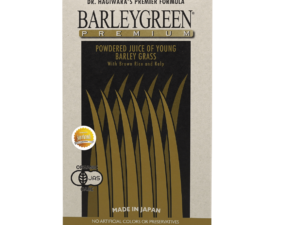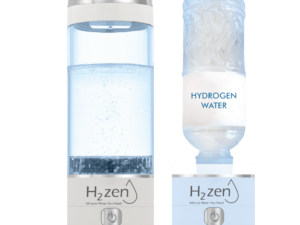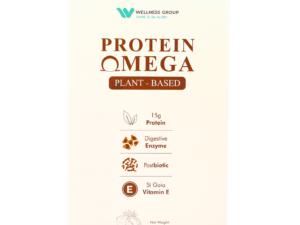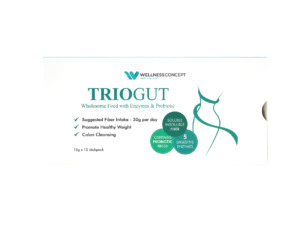Did you know that antibiotics—while saving lives—could silently disrupt your body’s natural defenses? These medications don’t just target harmful pathogens; they also wipe out essential microbes in the gut, leaving many struggling with digestive discomfort. How can you protect your health during treatment without undermining its benefits?
Antibiotics are vital for fighting infections, but their impact on the gut microbiome is often overlooked. This delicate ecosystem of bacteria influences digestion, immunity, and even mental well-being. When disrupted, it can lead to diarrhea, bloating, or nutrient deficiencies. Fortunately, research shows strategic steps can help restore balance.
Timing matters. Consuming probiotic-rich foods or supplements after completing a course of antibiotics allows beneficial strains to repopulate. Fermented foods like yogurt or kimchi, paired with fiber-rich vegetables, create a nourishing environment for good bacteria. For those seeking guidance on probiotic timing, this resource offers science-backed insights.
This guide explores practical ways to support your gut during and after treatment. From dietary tweaks to evidence-based supplements, you’ll learn how to minimize side effects while promoting long-term wellness.
Key Takeaways
- Antibiotics can disrupt gut bacteria balance, affecting digestion and immunity.
- Probiotics and prebiotic foods help replenish beneficial microbes post-treatment.
- Timing probiotic intake after antibiotics maximizes their effectiveness.
- High-fiber diets support gut health recovery by feeding good bacteria.
- Balancing treatment and microbiome care reduces long-term health risks.
Understanding the Impact of Antibiotics on Gut Health
Antibiotics act like a storm in the digestive system—wiping out both harmful pathogens and beneficial microbes. This disruption can leave the gut microbiome vulnerable, triggering short-term discomfort and long-term imbalances. Recognizing these effects helps patients make informed choices during treatment.
Effects on the Gut Microbiome
Broad-spectrum antibiotics cause the most damage, eliminating up to 24 bacterial species in just five days. The gut undergoes three phases:
- Attack phase: Medications reduce microbial diversity.
- Imbalance phase: Opportunistic bacteria multiply.
- Recovery phase: Restoration takes weeks or months—some species never return.
Studies show only 63% of original bacteria recover after six months. This imbalance weakens immune defenses and nutrient absorption.
| Antibiotic Type | Microbial Loss | Recovery Time |
|---|---|---|
| Broad-spectrum | High (20+ species) | 2-6 months |
| Narrow-spectrum | Moderate | 1-3 months |
Common Side Effects and Concerns
Nearly 30% of antibiotic users experience digestive issues like diarrhea or bloating. These side effects occur when harmful bacteria outcompete protective strains. Persistent imbalances may lead to symptoms of probiotic deficiency, including fatigue or food sensitivities.
Drug-resistant bacteria often thrive post-treatment, creating new health risks. Staying hydrated and avoiding irritants like alcohol can ease discomfort during recovery.
How do you get good bacteria while on antibiotics?
Maintaining microbial harmony during antibiotic treatment requires smart strategies. Combining targeted supplements with nutrient-dense foods creates a safety net for your digestive ecosystem.
Role of Probiotics in Restoring Balance
Probiotics act as temporary allies, replenishing populations of beneficial microbes. Research shows spacing their intake 4-6 hours after antibiotics improves survival rates. This gap allows medications to process while giving new bacterial recruits time to establish footholds.

Specific strains like Lactobacillus demonstrate particular resilience against antibiotic disruption. Studies indicate regular use can reduce diarrhea risk by 42% during treatment cycles.
Importance of Prebiotic Foods
Prebiotic foods serve as fuel for surviving microbes. Dark chocolate and berries contain polyphenols that stimulate growth of protective bacteria. Even small daily portions (like 30g of 70% cocoa) show measurable benefits.
Fermented options like tempeh work double duty—providing live cultures and digestion-friendly fibers. Pairing these with antibiotics helps maintain baseline microbial activity, smoothing the path to full recovery.
Dietary Strategies to Restore Gut Bacteria
Strategic eating patterns can turn meals into microbiome medicine. Choosing specific foods at optimal times creates ideal conditions for microbial recovery after antibiotics. This approach combines immediate microbial support with long-term nourishment for lasting balance.
Incorporating Fermented Foods
Fermented foods deliver live cultures straight to the digestive system. Options like yogurt, kefir, and kimchi contain Lactobacilli strains shown to restore gut ecosystems. A 2022 study found daily consumption reduced antibiotic-related digestive issues by 37%.
Boosting Fiber Intake for Gut Health
Fiber acts as fertilizer for surviving microbes. After finishing antibiotics, increasing soluble fiber from oats or apples may help rebuild bacterial networks. Research shows it reduces antibiotic-resistant genes by 29% when consumed regularly.
| Fiber Type | Best Sources | Gut Benefits |
|---|---|---|
| Soluble | Oats, berries | Feeds beneficial bacteria |
| Insoluble | Whole grains | Supports regularity |
| Resistant starch | Cooled potatoes | Enhances microbial diversity |
Smart Timing of Probiotic Supplementation
Space probiotic-rich foods 3-4 hours apart from antibiotics. This gap allows medications to clear while giving new microbes time to establish. Pair morning yogurt with afternoon antibiotics for optimal effect.
Post-treatment, combine fermented foods with high-fiber meals. This dual approach helps restore gut communities faster than either strategy alone. Remember – patience is key as microbial ecosystems rebuild gradually.
Managing Side Effects and Enhancing Antibiotic Efficacy
What you eat during antibiotic treatment can make or break its success. Smart food choices help reduce side effects like diarrhea while ensuring medications work effectively against infections. Let’s explore how timing and selection create safer conditions for both your gut and treatment outcomes.
Navigating Dietary Pitfalls
Grapefruit and calcium-rich foods often sabotage antibiotics. Citrus enzymes block medication breakdown, while calcium binds to drugs like tetracycline—reducing their infection-fighting power. Experts suggest waiting 2 hours before consuming dairy or fortified juices after taking pills.
Alcohol mixes poorly with certain medications. Combining it with Metronidazole may trigger nausea or rapid heartbeats. “When patients skip alcohol during treatment, recovery speeds up dramatically,” notes a Kuala Lumpur gastroenterologist.
Dairy timing matters too. Though yogurt supports gut health, taking it within 3 hours of antibiotics limits drug absorption. Plan meals around medication schedules—try morning pills with toast, then enjoy Greek yogurt as an afternoon snack.
| Food | Interaction Risk | Safe Waiting Time |
|---|---|---|
| Grapefruit | Blocks drug breakdown | 4+ hours |
| Dairy products | Reduces absorption | 3 hours |
| Alcohol | Worsens side effects | Avoid completely |
Strategic eating minimizes digestive distress while maximizing treatment results. Simple adjustments—like swapping calcium-rich breakfasts for oatmeal—protect both your gut and antibiotic effectiveness throughout the course.
Expert Tips from Wellness Group for Gut Health
Navigating antibiotic treatment while protecting gut health requires more than guesswork—it demands expert insight. Research highlights that 58% of patients who combine probiotics with antibiotics reduce their risk of C. difficile infections. This approach becomes vital for families, as studies link repeated antibiotic use in infants to higher asthma and eczema risks.
Contact Information and Business Hours
The Wellness Group’s team offers personalized guidance to balance treatment effectiveness with microbiome care. Reach them via WhatsApp at +60123822655 for immediate queries about probiotic timing or food-drug interactions. Their Kuala Lumpur-based consultants operate Monday-Friday (9:30 am-6:30 pm) and Saturdays (10 am-5 pm), aligning with Malaysia’s busy lifestyles.
Consulting with Healthcare Professionals
Tailored advice matters. A 2023 study found individuals receiving professional guidance had 31% fewer antibiotic-related digestive issues. For children with multiple antibiotic courses, experts recommend microbiome assessments to mitigate long-term health risks. “Early intervention reshapes gut ecosystems more effectively,” notes a Wellness Group gastroenterologist.
Their consultations evaluate medication schedules, dietary habits, and family history—critical factors often overlooked. This proactive strategy helps rebuild gut microbiome diversity while minimizing disruptions to treatment outcomes.
Lifestyle Adjustments for a Balanced Gut Microbiome
Rebalancing your gut after medication involves more than what’s on your plate. While diet plays a key role, research shows daily habits significantly influence how quickly your microbiome rebounds. Simple changes in movement, stress reduction, and environmental choices create optimal conditions for beneficial bacteria to thrive.

Movement Meets Microbial Support
Regular walks or yoga sessions do more than tone muscles—they boost gut health. Studies link 30 minutes of daily movement to 18% higher microbial diversity. This variety helps beneficial bacteria outcompete harmful strains disrupted by antibiotics.
Stress management proves equally vital. Chronic anxiety alters the gut-brain connection, slowing recovery. Mindfulness practices like deep breathing or nature walks help restore balance. “Patients who meditate daily recover microbial balance 22% faster,” notes a Kuala Lumpur gastroenterologist.
Prioritize sleep consistency and reduce antimicrobial product use. Nightly 7-8 hour rest periods let the body repair gut lining. Swapping harsh cleaners for vinegar solutions protects microbial allies on surfaces—and in your gut microbiota.
- Morning sunlight exposure boosts vitamin D for immune support
- Social interactions increase microbial exchange through shared environments
- Gardening introduces soil-based organisms that diversify gut strains
Conclusion
Balancing antibiotic treatment with gut health protection requires intentional action. While these medications fight infections effectively, their broad-spectrum approach disrupts microbial ecosystems. Strategic recovery efforts during and after a course antibiotics regimen help minimize long-term health risks.
Timing probiotic intake and prioritizing prebiotic-rich foods creates optimal conditions for microbial regrowth. Research confirms spacing supplements 3-4 hours from medication doses improves survival rates of beneficial strains. Post-treatment, fermented foods paired with fiber accelerate recovery better than isolated approaches.
Consulting professionals ensures personalized strategies that address individual needs. Studies show guided plans reduce digestive complications by 31% compared to self-managed care. For families managing repeated course antibiotics, expert support helps maintain immune resilience across generations.
Proactive care transforms antibiotic use from a necessary disruption into an opportunity for health optimization. By understanding the effects antibiotics have on microbial networks, patients can help restore balance while safeguarding against future infections.
FAQ
Can antibiotics harm gut bacteria diversity?
Yes. Antibiotic treatment often reduces microbial diversity by eliminating both harmful and beneficial bacteria. This imbalance may lead to digestive issues like diarrhea or yeast infections. Prioritizing gut-friendly habits during and after therapy helps rebuild a resilient microbiome.
What’s the best way to take probiotics with antibiotics?
Spacing probiotic supplements 2–3 hours apart from antibiotic doses ensures the medication doesn’t kill the beneficial strains. Brands like Culturelle or Renew Life offer strains such as Lactobacillus or Bifidobacterium, which studies suggest support gut health during treatment.
Are fermented foods effective for restoring gut balance?
Absolutely. Foods like kimchi, kefir, and unsweetened yogurt introduce live cultures that replenish gut microbiota. For example, Siggi’s Icelandic yogurt contains active cultures shown to improve digestion and reduce antibiotic-associated side effects when consumed daily.
How does fiber intake help during antibiotic use?
High-fiber foods like oats, bananas, and lentils act as prebiotics, fueling the growth of remaining good bacteria. Research indicates a fiber-rich diet enhances microbial recovery post-treatment, though it’s wise to increase intake gradually to avoid bloating.
Should certain foods be avoided while on antibiotics?
Yes. Grapefruit and calcium-fortified juices can interfere with drug absorption. Processed sugars may also feed harmful microbes, worsening imbalances. Opt for whole foods like steamed veggies or lean proteins to support healing without disrupting medication efficacy.
When should someone consult a doctor about gut health?
If severe symptoms like persistent diarrhea, fever, or cramps occur, contact a healthcare provider immediately. Professionals can recommend tailored solutions, such as specific probiotic strains or dietary adjustments, to address individual needs safely.
Can stress management impact gut recovery?
Definitely. Chronic stress slows gut repair by altering microbial activity. Practices like yoga, meditation, or even short walks enhance digestion and create a favorable environment for beneficial bacteria to thrive alongside antibiotic therapy.






